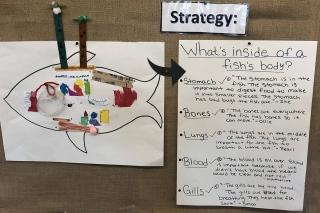Do you want to help your students explore their interests and extend their learning beyond a scripted curriculum? Consider trying inquiry-based investigations in your early childhood classroom.
There are three parts to an inquiry-based investigation: 1. choosing a topic to investigate; 2. investigation and documentation of students’ wonderings; and 3. reflection and a culminating event or project to show the arc of discovery.
When conducting an investigation, students need to be comfortable expressing their ideas to their peers. Before beginning an inquiry-based investigation, think about opportunities for your students to engage in dialogue and questioning with one another. Looking at your class meetings is a great start. How are they structured? Are they led by the teacher or facilitated by students?
In our prekindergarten classroom, we usually discover a topic for our investigations during choice time, on an outing or when a student shares an experience they’ve had. If your students participate in choice time, view it with the same critical lens you would use for a math or ELA lesson: Play experiences should be thoughtful and meaningful to the class community. Listen in and make time for conversations that are led by students and facilitated by you. Provide materials that invite further exploration, questions and conversations. Then think about how to document these moments and report them back to your class.
It is important to note that investigations do not have to be whole-class activities. In my classroom, I have a documentation board on which we keep track of all the things we are wondering about. We write our “wonderings” on sentence strips so that we can easily move them to our “Discovery Center” area. There are three headings on our “Discovery Center” board: Today we will investigate … Strategies we used … We discovered … .
When I conduct an investigation with students in a small group, we choose a wondering to investigate via a child-led strategy, usually a hands-on experiment. Right now, for example, we are studying fish. We have investigated the questions “Do fish play?” and “Do fish have blood and bones?” We have tested materials to see if they are waterproof, made fish toys and even dissected a fish.
It is important to make the story of the learning visible to the class community and allow students to take part in recording their ideas and what they learned is vital. In my classroom, we use choice-time journals. During choice time, I photograph students in centers and paste these pictures in their journals. After choice time, I meet with students to discuss their investigations and capture the story of their center work. I record students’ words along with their sketches to support the anecdotal record and photo.
Rather than centering your teaching around a particular topic you choose in advance, inquiry work is a style of teaching that is about becoming a partner in learning with your students.
